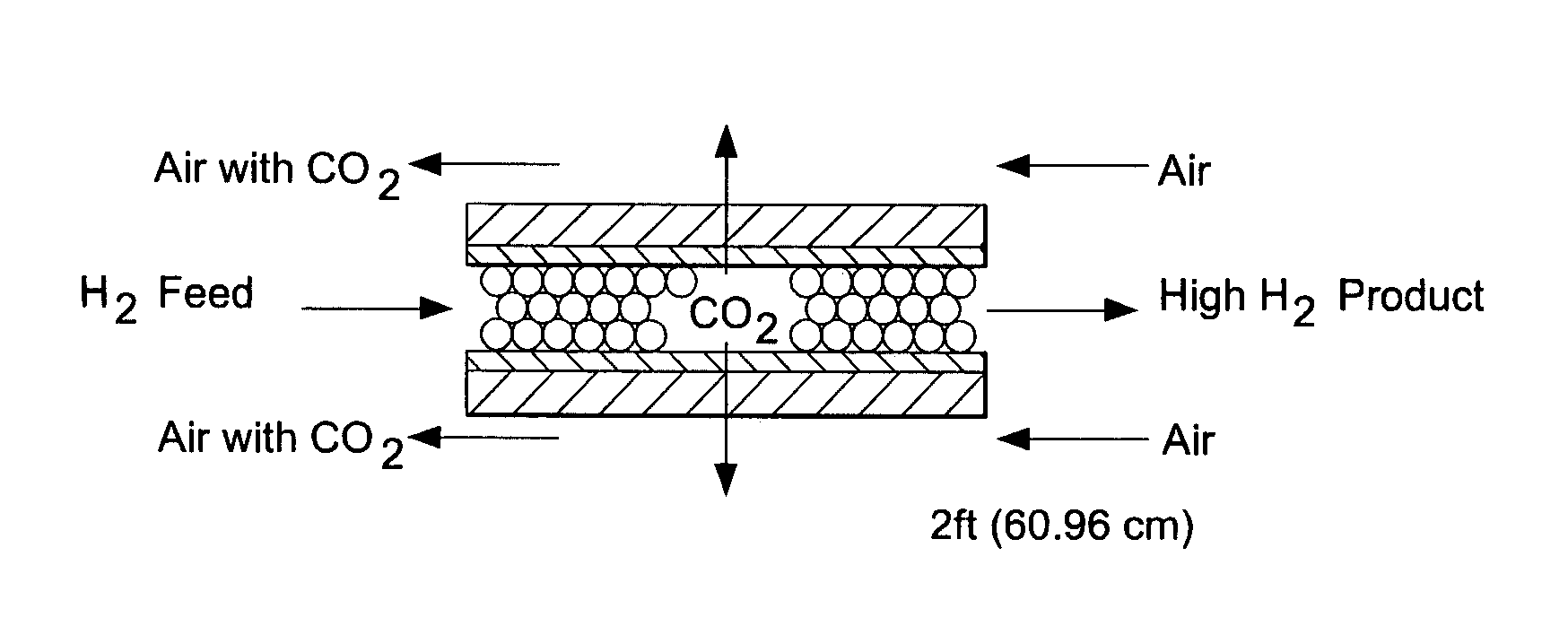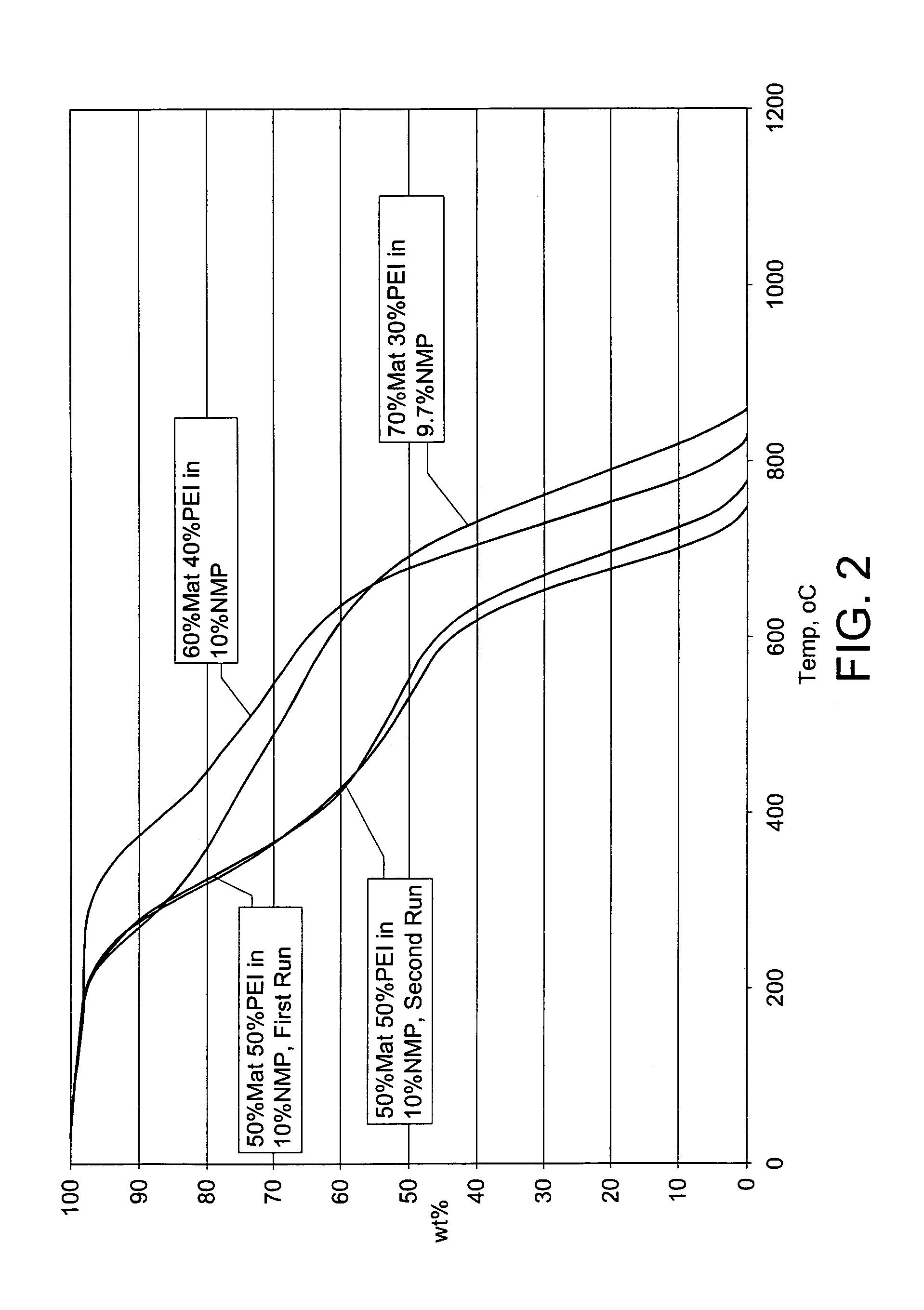CO2-selective membranes containing amino groups
a selective membrane and amino group technology, applied in the field of co2-selective membranes containing amino groups, can solve the problems of reducing fuel cell efficiency, inefficient reaction, carbon monoxide contamination in the hydrogen fuel produced from a conventional wgs reactor, etc., and achieves improved recovery as well as purity, advantageous thermal stability, and enriched h2 end product results.
- Summary
- Abstract
- Description
- Claims
- Application Information
AI Technical Summary
Benefits of technology
Problems solved by technology
Method used
Image
Examples
example 1
[0033]A membrane comprising 50 weight % poly(4-vinylpyridine) and 50 weight % polyimide was prepared. To a solution containing 3 g of 4,4′-Oxydianiline (ODA) in 12.4 ml of DMF, 4.75 g of 4,4′-Oxydiphthalic anhydride (ODPA) was added gradually under mixing to make the polyamic acid. During the synthesis of the polyamic acid, an additional 26.3 ml of DMF was added to the solution to adjust for increases in the solution viscosity. To the resulting polyamic acid was added a solution of 7.75 g poly(4-vinylpyridine) in 25.4 ml DMF. An additional 20 ml of DMF was added to the solution. The resulting solution was used to cast a membrane by the technique of knife casting.
[0034]The cast membrane was placed in a fume hood at ambient temperature overnight to allow evaporation of the DMF solvent. Following solvent evaporation, the membrane was dried at 120 C under nitrogen overnight. As a final step, the membrane was cured for 4.5 hours at 220 C under nitrogen. As shown in FIG. 1, thermal gravim...
example 2
[0035]A membrane comprising 35 weight % poly(4-vinylpyridine) and 65 weight % polyimide was prepared as described in Example 1 except that 4.17 ml of poly(4-vinylpyridine) in 13.7 ml DMF were used, and the resulting membrane was cured at 240 C for 2.5 hours. The membrane had a thermal stability of about 280 C by TGA.
example 3
[0036]A membrane comprising 77 weight % poly(4-vinylpyridine) and 23 weight % polyimide was prepared as described in Example 1, with the appropriate amount of poly(4-vinylpyridine). The membrane had a thermal stability of about 280 C by TGA.
PUM
| Property | Measurement | Unit |
|---|---|---|
| Percent by mass | aaaaa | aaaaa |
| Percent by mass | aaaaa | aaaaa |
| Weight | aaaaa | aaaaa |
Abstract
Description
Claims
Application Information
 Login to View More
Login to View More - R&D
- Intellectual Property
- Life Sciences
- Materials
- Tech Scout
- Unparalleled Data Quality
- Higher Quality Content
- 60% Fewer Hallucinations
Browse by: Latest US Patents, China's latest patents, Technical Efficacy Thesaurus, Application Domain, Technology Topic, Popular Technical Reports.
© 2025 PatSnap. All rights reserved.Legal|Privacy policy|Modern Slavery Act Transparency Statement|Sitemap|About US| Contact US: help@patsnap.com



